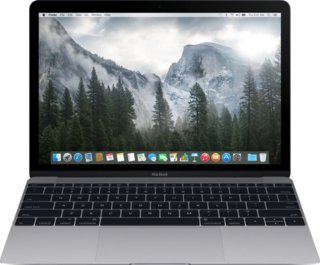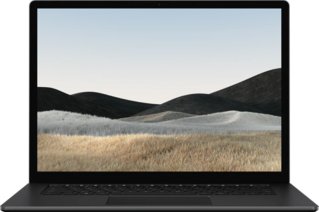Apple MacBook Pro (2015) 15" vs Microsoft Surface Laptop 4 15" Intel Core i7-1185G7
Step into the universe of top-notch laptops, where we compare two leading options: Apple's MacBook Pro (2015) 15" and Microsoft's Surface Laptop 4 15". Each model stands out with unique perks tailored to different user needs.
The MacBook Pro, a fan-favorite in Apple's range, wins users with its superior build and smooth software blend. On the other hand, the Surface Laptop 4 showcases Microsoft's advanced tech with a robust Intel Core i7 processor and generous storage.
We'll delve into their design, performance, and practicality to help you pinpoint which laptop is your perfect match. Be it a creative professional seeking power and dependability or an everyday user valuing ease and effectiveness, let our detailed comparison navigate you through these tech wonders.
System and application performance
Performance in popular 3D games
Viewing angle, color accuracy...
Ports, webcam and other interfaces
Potential battery life
Materials, durability and portability
Design Comparison
Size Comparison
When comparing the Apple MacBook Pro (2015) 15" and the Microsoft Surface Laptop 4 15" Intel Core i7-1185G7, various design elements greatly affect user experience. Let's explore how these aspects impact usability and visual appeal for diverse user requirements.
Ergonomics
- MacBook Pro (2015): The MacBook Pro is known for its sleek and slim design, which allows for easy portability.
- The backlit keyboard improves usability in low-light settings.
- Surface Laptop 4: The Surface Laptop 4's sleek design enhances its portability.
- The backlit keyboard guarantees a comfortable typing experience even in low-light environments.
Materials & Build Quality
- Both laptops are constructed with top-quality materials that convey both resilience and elegance.
- The MacBook Pro's sturdy aluminum build provides a solid feel, whereas the Surface Laptop 4 boasts a high-quality finish attractive to both professionals and students.
Portability
- Weighing just 3.4 pounds, the Surface Laptop 4 is lighter than the MacBook Pro, making it more portable. The Surface Laptop 4's slim profile makes it easy to carry around.
Unique Design Features
- MacBook Pro (2015):
- HDMI output and Thunderbolt ports provide versatile connectivity options.
- The inclusion of MagSafe power adapter enhances safety by easily detaching in case of accidental tugs.
- Surface Laptop 4:
- Touch screen functionality adds an interactive dimension to user interaction.
- Facial recognition and voice commands offer convenient and secure login options.
Practical Usability across User Needs
- Students:
- MacBook Pro: Offers ample connectivity options for presentations and group work with HDMI and Thunderbolt ports.
- Surface Laptop: Touch screen functionality may appeal to students for note-taking or creative tasks.
- Professionals:
- MacBook Pro: Backlit keyboard aids in late-night work sessions or during travel.
- Surface Laptop: Facial recognition provides quick and secure access during busy workdays.
Aesthetic Appeal
- Both laptops have a modern design appealing to users who appreciate style.
- The MacBook Pro's timeless aluminum body appeals to users who appreciate classic elegance, while the Surface Laptop's sleek finish caters to those seeking a modern aesthetic.
In conclusion, when choosing between these laptops based on design elements, consider factors such as portability, ergonomics, unique features, materials used, and overall aesthetic appeal. The MacBook Pro stands out with its connectivity options and durable aluminum build, while the Surface Laptop offers better portability and modern features like touch screen functionality.
Screen Comparison
| Apple MacBook Pro (2015) 15" | Microsoft Surface Laptop 4 15" Intel Core i7-1185G7 | |
|---|---|---|
| Resolution | QHD | Full HD |
| Screen Size | 15.4" | 15" |
Apple MacBook Pro (2015) 15" Screen:
Screen Size:
The Apple MacBook Pro presents a 15.4-inch display, offering plenty of space for immersive experiences and multitasking.
Resolution:
The MacBook Pro boasts a resolution of 2880 x 1080 pixels, offering crisp and detailed visuals perfect for graphic design tasks that require precision.
Pixel Density:
At 220 pixels per inch (ppi), the display ensures clear text and images, improving the overall content clarity on the screen.
Display Technology:
The MacBook Pro's screen utilizes IPS technology with LCD and LED-backlit features, providing vibrant colors and wide viewing angles, ideal for professional tasks such as photo editing.
Anti-Reflection Coating:
The anti-glare coating minimizes reflections, enhancing visibility in different lighting environments for uninterrupted work.
Supported Displays:
The MacBook Pro can support up to three external displays, which enables increased productivity by offering more screen space for multitasking or creative tasks.
Microsoft Surface Laptop 4 15" Screen:
Screen Size:
The Microsoft Surface Laptop 4, with its compact 15-inch display, strikes a balance suitable for professionals and students who need portability without sacrificing screen real estate.
Resolution:
The Surface Laptop 4 offers sharp visuals ideal for daily activities such as web browsing and document editing, boasting a resolution of 2496 x 1080 pixels.
Pixel Density:
At a pixel density of 201 ppi, this laptop provides decent clarity for most activities but may not match the level of detail required for intricate design work compared to higher-density screens.
Display Technology:
Like the MacBook Pro, the Surface Laptop 4 also utilizes IPS technology with LCD and LED-backlit features to offer good color accuracy and wide viewing angles for general use cases.
Touch Screen Functionality:
The Surface Laptop 4 stands out with its touch screen feature, enabling intuitive interactions like drawing directly on the screen or using touch gestures.
Supported Displays:
Users can enhance their productivity by expanding their workspace with support for up to 4 external displays, ideal for professionals who require multiple screens for effective multitasking.
Comparison Summary:
- For Gaming: Gaming enthusiasts who value high visual fidelity and detail may find the MacBook Pro's higher resolution and pixel density more suitable.
- Professional Graphic Design: The MacBook Pro's higher resolution and anti-glare coating give it an advantage in color accuracy and reduced glare over the Surface Laptop 4, making it ideal for tasks requiring precise color representation.
- General Productivity: Both laptops have quality displays suitable for daily use. Individuals who value touch screen functionality might prefer the Microsoft Surface Laptop 4.
Hardware Comparison
| Apple MacBook Pro (2015) 15" | Microsoft Surface Laptop 4 15" Intel Core i7-1185G7 | |
|---|---|---|
| RAM | 16GB | 32GB |
| Storage Size | 1000GB | 1000GB |
When contrasting the hardware features of the Apple MacBook Pro (2015) 15" and the Microsoft Surface Laptop 4 15" Intel Core i7-1185G7 3GHz / 32GB RAM / 1TB SSD, certain critical components greatly influence performance across different tasks. Let's explore each device in depth to empower you in making a well-informed choice tailored to your requirements.
Apple MacBook Pro (2015) 15
- CPU: The MacBook Pro houses a 4 GHz CPU that delivers reliable performance for daily computing needs.
- GPU: Integrated Intel Iris Pro graphics provide decent visuals for multimedia consumption and light gaming.
- RAM: With 16GB RAM operating at 1600 MHz, multitasking is smooth, though heavy software operation might be slightly constrained due to lower RAM speed.
Microsoft Surface Laptop 4
- CPU: The Intel Core i7-1185G7 processor in the Surface Laptop 4 features a clock speed of 3GHz, delivering robust processing power for demanding applications.
- GPU: Integrated graphics ensure decent performance for multimedia tasks and light gaming.
- RAM: The laptop offers a generous 32GB RAM operating at a significantly faster speed of 4267 MHz. This allows seamless multitasking and smoother operation of heavy software applications.
Performance Impact
- Multimedia Capabilities: Both laptops are capable of handling everyday multimedia tasks such as streaming videos, browsing the web, and light photo editing. The faster RAM speed of the Surface Laptop 4 enhances playback and editing experiences for smoother performance.
Optimal Performance with Resource-Intensive Software: For demanding tasks like video editing and advanced design, the Surface Laptop 4 stands out with its superior RAM capacity and faster memory speed compared to the MacBook Pro. This translates to faster rendering and significantly improved performance overall.
Conclusion
If you prioritize raw processing power and need a laptop that can effortlessly handle heavy software applications, the Microsoft Surface Laptop 4 with its superior RAM specs is an ideal choice. On the other hand, if you value reliability in everyday tasks with moderate multitasking requirements and are comfortable with slightly lower RAM speeds, the Apple MacBook Pro could still serve you well.
Ultimately, your decision should align with your specific usage scenarios—whether that involves casual multimedia consumption or intensive software development.
Battery Comparison
| Apple MacBook Pro (2015) 15" | Microsoft Surface Laptop 4 15" Intel Core i7-1185G7 | |
|---|---|---|
| Battery Life | 9 hours | 16.5 hours |
When comparing the battery performance of the Apple MacBook Pro (2015) 15" with the Microsoft Surface Laptop 4 15" Intel Core i7-1185G7, there are notable differences to consider:
Apple MacBook Pro (2015) 15"
* Battery Life: 9 hours
* Battery Power: 6600 mAh
* Has a MagSafe Power Adapter: true
Microsoft Surface Laptop 4 15" Intel Core i7-1185G7* Battery Life: Up to 16.5 hours
* Has Sleep and Charge USB Ports: true
Battery Life Comparison:
- The Apple MacBook Pro (2015) provides a battery life of 9 hours, making it ideal for daily moderate use. The Microsoft Surface Laptop 4 stands out with an impressive battery life of 16.5 hours, ensuring extended usability with minimal recharging needed.
Battery Power and Charging:
- The Apple MacBook Pro has a battery capacity of 6600 mAh, providing consistent performance throughout its intended usage period. The Microsoft Surface Laptop 4 excels in power management, enhancing its already impressive battery life.
Connectivity Features:
The Apple MacBook Pro comes with a Mag
Safe power adapter for easy charging, while the Microsoft Surface Laptop 4 provides additional functionality with Sleep and Charge USB ports, allowing for more flexibility in powering external devices.
Conclusion:
The Microsoft Surface Laptop 4 offers longer battery life than the Apple MacBook Pro (2015), making it ideal for users needing extended use without frequent recharges. However, if you value other features or the convenience of a MagSafe power adapter, the Apple MacBook Pro could still meet your needs.
Verdict
Why Apple MacBook Pro (2015) 15"?
- Superior connectivity options with HDMI output and Thunderbolt ports.
- Timeless aluminum body design for classic elegance.
- Anti-glare coating for reduced reflections and enhanced visibility during work.
- Strong build quality with a sturdy aluminum construction.
Why ?
- Superior battery life of up to 16.5 hours.
- Faster RAM speed at 4267 MHz for smoother multitasking and performance.
- Touch screen functionality for intuitive interactions and creative tasks.
- Support for up to 4 external displays, enhancing productivity for professionals.
Similar comparisons
- Apple MacBook Pro (2015) 15" vs Microsoft Surface Book 3 13.5" Intel Core i5-1035G7 8GB RAM 256GB SSD
- Apple MacBook Pro (2015) 15" vs Microsoft Surface Book 2 13.5" Intel Core i7-8650U 16GB 1TB
- Apple MacBook Pro (2015) 15" vs HP Pavilion 15 15.6" Intel Core i5-4200U
- Apple MacBook Pro (2015) 15" vs HP EliteBook 840 G1 14" intel Core i5-4300U
- Acer Nitro 5 15.6" Intel Core i7-11800H Nvidia GeForce RTX 3050 Laptop vs Asus ROG Strix G15 Intel Core i7-10750H

